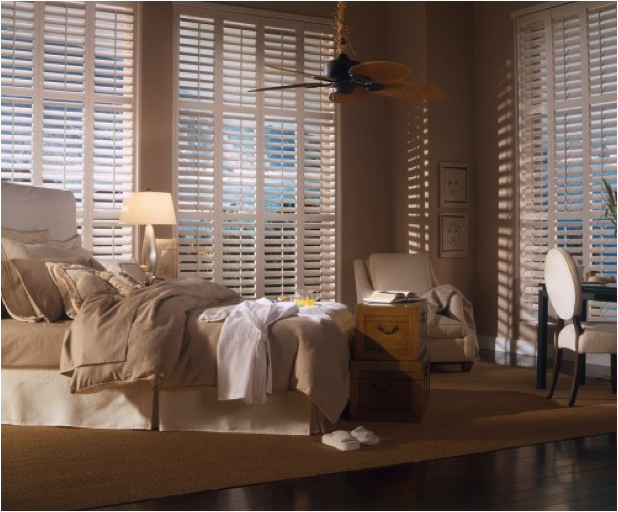
Curtain, drapes, shades, or shutters?
Window treatments define the style and mood of your room. When you decide on a window treatment, start with the style, then think about color and design—and don’t forget hardware choices to add the right finishing touch.
The first step in choosing a window treatment is to decide how much privacy and light control you need. For a room in which minimal privacy is needed, maximize the available natural light and select sheer fabrics. For more privacy and coziness, create a soft wall of opaque texture and rich color. However, beware of overdressing windows with yards of fabric, which can make your room look dated.

Cafe curtains are ideal for a kitchen nook
Both curtains and drapes consist of panels of fabric; it is how they are attached at the top that determines which category they fall into.
By definition, curtains are gathered on a rod or attached to it by tabs, ties, or rings. They are generally stationary; if they are opened and closed, it is done by hand.
Curtains can be as simple as a flat panel tied back above the sash, pleated to resemble a drape, or voluminous creations. They can also be any length, from café style, which covers only the lower half of a window, to full-length curtains that reach to the floor.

Elegant drapes instantly add drama to a room.
These are the mainstay of window fashions. By definition, drapes are pleated panels that hang from hooks that attach to small slides on a rod. You open and close the panels by a cord that moves the slides along a track. The rod itself may either be covered by the panel or exposed. Pinch-pleated styles are traditional, but numerous variations exist.
The length of your drapes can have great impact. For a clean, casual look, hang drapes so that they just touch the floor. For a more dramatic effect, allow the fabric to puddle four to six inches on the floor in luxurious folds.
The size of the room, the height of the windows, and the scale of the treatment will suggest the appropriate hardware for your drapes. Mount rods directly to the window frame or to the wall above it, depending on the look you want to achieve. To create the illusion of added height, hang the rod higher than the window frame.

Fabric shades provide privacy and light control.
Shades are one of the most practical and hard-working window treatments. They offer easy light control, instant privacy and a clean, tailored silhouette in a wide range of colors and fabrics. Options include simple roller shades, insulated honeycomb shades, woven shades, wooden shades, and soft fabric shades, including Roman, balloon, and cloud shades.
Shades are a good choice if windows don’t allow a fuller treatment, such as corner windows without much space between them. They’re also a good choice for an uncluttered look, or when you want to use a fabric with a large pattern or motif, because they will help show off the fabric. Naturally woven blinds and shades give a handmade feel due to their organic texture.
Shades can be mounted inside the window frame or on the wall or molding outside the frame. The general rule is to add two to three inches to the overall width of the shade to allow room for mounting hardware.

Budget Blinds – How to Pick the Best Window Treatments
Blinds and shutters have adjustable louvers and vanes that tilt to filter the light, level to reveal the view or shift to completely block the view. Horizontal blinds made of vinyl or metal come in a wide array of finishes and colors; vertical blinds also come in an array of textures and materials and create a more contemporary look. Wood blinds mimic the look of shutters but at a lower cost.
Shutters add architectural interest and style to a window. They’re available in wood and vinyl. Traditional shutters with 1-inch louvers provide privacy but cut down on light and the view. Plantation shutters have wider louvers, 2- and 3-inch sizes, which allow better ventilation and a clearer view.
All types of window treatments need hardware. They can be as simple as a spring-loaded rod, ideal for a café curtain, to an elaborate top rod that may outshine the window treatment itself.
Hardware that will be covered by fabric is generally plain and unobtrusive. Other hardware is more decorative, including styles that include elaborate finials. When choosing the latter, look for styles that blend well with your windows and the rest of the room’s decor.
Budget Blinds helps you sort out the difference and discover what works best with your room, your windows, and your style.
Your “Two Blind Girls,” owners Sherry and Natalie are a mother/daughter team with a great eye for window treatments. With a style for every point of view, they’ll develop and execute the perfect window treatment for your home.